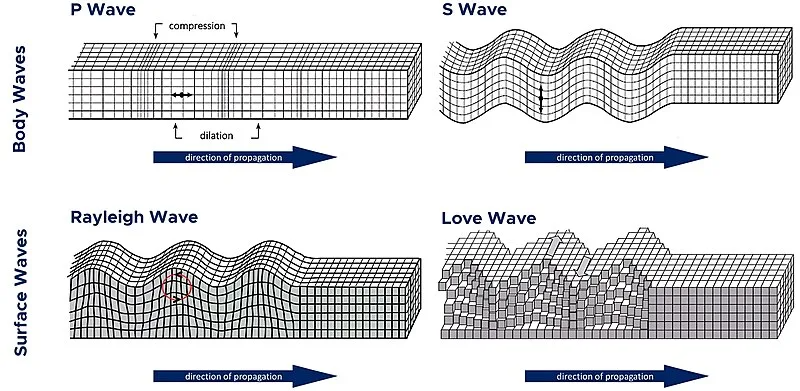July 30th Current Affairs
Table of Contents

Operation Sindoor
July 21st Current Affairs Home / Operation Sindoor Why in News? Parliament’s Monsoon Session, starting July 21, 2025, is expected to feature
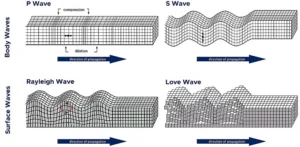
Alaska Earthquakes
July 21st Current Affairs Home / Alaska Earthquakes Why in News? On July 21, 2025, Alaska Peninsula was struck by

August 2, 2027 Solar Eclipse
July 21st Current Affairs Home / August 2, 2027 Solar Eclipse Why in News? A total solar eclipse is set
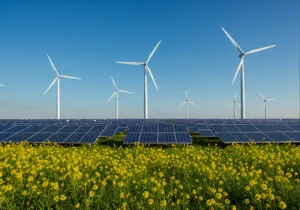
India’s milestone in clean energy transition
July 21st Current Affairs Home / India’s milestone in clean energy transition Why in News? India achieved a milestone by

‘Baby Grok’, child-friendly AI app
July 21st Current Affairs Home / ‘Baby Grok’, Child-friendly AI app Why in News? Elon Musk’s AI company xAI has announced
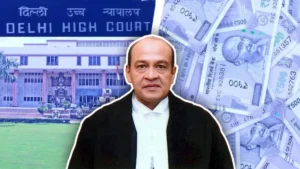
Impeachment proceedings against Justice Yashwant Verma
July 22nd Current Affairs Home / Impeachment proceedings against Justice Yashwant Verma Context On July 22, 2025, impeachment proceedings against
Australia Bans YouTube for Under-16s

Context
Australia has announced a comprehensive ban on YouTube for users under 16, extending existing restrictions on social media platforms like TikTok, Instagram, and Snapchat. The law will take effect from December 2025, imposing steep fines of nearly $50 million for violations.
Background
Initially, YouTube had been excluded from Australia’s broader social media restrictions. However, the eSafety Commissioner lobbied for its inclusion, citing risks similar to other platforms. A 2024 survey found that 37% of Australian minors encountered harmful content on YouTube—the highest among platforms—and 68% of children aged 10–12 used YouTube regularly.
Government Measures
- Ban Timeline: Effective December 2025.
- Penalties: Fines up to AUD 49.5 million (~USD 33 million) for violations.
- Scope: Applies to children under 16 creating or using accounts.
- Exemptions: Parents and educators can still access videos in supervised settings.
- Technology Deployment: Age-verification measures to be published soon.
Reasons for the Ban
- Child Safety: Exposure to harmful content, cyberbullying, and grooming.
- Mental Health Concerns: Anxiety, addiction, and low self-esteem in minors.
- AI Algorithm Risks: Personalized recommendations can push inappropriate content.
- Consistency: Aligns with bans on other algorithm-based platforms.
Significance
- Precedent Setting: Australia becomes the first major democracy to regulate YouTube as a platform harmful to children.
- Global Influence: May inspire similar laws in the UK, Canada, and the EU.
- Big Tech Accountability: Reinforces regulatory pressure on Alphabet, YouTube’s parent company.
- Institutional Backing: Supported by education authorities and cybersecurity officials.
Definition of Key Technical Terms
- Algorithm-Driven Recommendations: AI-based content suggestions tailored to user behaviour.
- Age Verification Technology: Digital tools (e.g., facial recognition, government ID checks) used to authenticate user age.
- eSafety Commissioner: Australia’s regulatory office for online safety, particularly for children.
Societal Impact
- Positive: May reduce exposure to online toxicity and delay digital dependency.
- Negative: Restricts access to educational and creative resources for teens.
- Parental Relief: Empowers parents with state-backed enforcement.
Challenges & Criticism
- Tech Pushback: Alphabet is reportedly considering legal action.
- Enforcement Difficulty: Age falsification, VPN usage, and platform circumvention.
- Digital Divide: Some students rely on YouTube for low-cost learning.
Technology’s Influence
- AI Growth: Accelerates content targeting and data profiling of minors.
- Smart TV Integration: Shifts YouTube from a mobile-first to a living room experience.
- Policy Gap: Social platforms evolving faster than regulations.
Economic Nuances
- Ad Revenue Loss: YouTube could lose substantial ad spend targeted at teen demographics.
- EdTech Disruption: Affects platforms reliant on YouTube for school-related content.
- Legal & Compliance Costs: High operational overhead for Big Tech due to regional regulations.
Lessons for India
- Need for Child-Centric Policy: India lacks specific age-based platform bans.
- Capacity Building: Strengthen the NCERT, NCPCR, and IT Ministry’s role in digital regulation.
- Digital Literacy Campaigns: Especially in rural schools, using YouTube for pedagogy.
Way Forward
- Balanced Regulation: Combine child safety with access to digital education.
- Age-Gated Platforms: Mandate child-safe versions of YouTube (e.g., YouTube Kids).
- Multi-Stakeholder Dialogue: Involve parents, educators, tech firms, and civil society.
- Global Cooperation: Form international digital safety coalitions like GDPR for children.
Prelims MCQ
Q. Consider the following statements regarding Australia’s new social media policy for children:
- The ban on YouTube for under-16s will be enforced through fines of up to AUD 49.5 million.
- The law exempts YouTube videos shown in classrooms by educators and parents.
Which of the above statements is/are correct?
(a) 1 only
(b) 2 only
(c) Both 1 and 2
(d) Neither 1 nor 2
Explanation:
Both statements are correct.
- Statement 1 is accurate: The new Australian policy imposes fines up to AUD 49.5 million on platforms that fail to restrict access to children under 16, specifically targeting YouTube’s algorithmic and interactive content structure.
- Statement 2 is also correct: The law permits YouTube content to be shown in educational settings or by parents under supervision, indicating that access isn’t fully banned but regulated.
This policy highlights Australia’s growing intent to safeguard minors from harmful online content. The move could act as a global precedent for balancing child safety with tech freedom.
Mains Question
Q. Discuss the implications of the regulatory ban on social media for children. What lessons can India draw in balancing online safety with the right to digital access?
Massive Russia Quake Triggers Global Tsunami Alerts

Context
On July 30, 2025, an 8.8-magnitude undersea earthquake struck off Russia’s Kamchatka Peninsula, triggering tsunami waves in Russia and Japan and prompting alerts across the Pacific, including the US, Philippines, and several Latin American countries. It marks one of the most significant seismic events in recent years.
Background
- The quake’s epicenter was located 136 km east of Petropavlovsk-Kamchatsky in Russia’s Far East.
- It triggered waves up to 4 meters in Kamchatka and led to evacuations in towns like Severo-Kurilsk.
- Subsequent aftershocks of magnitude 6.9 and 6.3 were also recorded.
Geological Formations
- The event occurred in the Kuril-Kamchatka Trench, part of the Pacific “Ring of Fire”, known for intense seismic and volcanic activity.
- The quake occurred in a subduction zone, where the Pacific Plate dives beneath the Okhotsk Plate.
Reasons for the Tsunami
- The earthquake displaced a large volume of seawater due to abrupt vertical movement along a fault line in the subduction zone.
- Similar tectonic settings were behind the 2004 Sumatra and 2011 Tohoku (Japan) tsunamis.
Significance
- Triggered tsunami alerts in over a dozen nations, highlighting the interconnectivity of ocean-based natural hazards.
- Evacuation efforts in multiple countries test the readiness of disaster management systems.
- Serves as a major test case for international coordination and early-warning systems.
Definitions of Technical Terms
- Subduction Zone: A region where one tectonic plate slides beneath another, often generating powerful earthquakes.
- Tsunami: A series of ocean waves caused by the large-scale displacement of water, often due to seismic activity.
- Epicenter: The point on the Earth’s surface directly above the earthquake focus.
Early Warning Measures
- The US Tsunami Warning Centers and the Japan Meteorological Agency issued alerts within minutes.
- Evacuations were ordered in Hawaii, California, Japan’s Hokkaido, and the Philippines.
- Airports and public transport were halted in some locations for smooth evacuation.
Challenges
- False alarms vs real threat dilemma: Evacuations cause public disruption, but are critical.
- Infrastructure vulnerabilities, especially in remote island regions.
- Real-time coordination between multiple nations remains difficult.
Technological Measures
- Deployment of DART (Deep-ocean Assessment and Reporting of Tsunamis) buoys to detect wave propagation.
- Use of GPS and satellite-based systems to estimate sea surface changes post-quake.
- Smartphone-based alert systems and public broadcasting services ensured rapid communication.
Economic Nuances
- Coastal cities face heavy disruption in transport, fisheries, and tourism.
- Insurance costs and property loss potential surge in the affected regions.
- Market disruptions, especially in Asia-Pacific stocks and crude oil shipping routes.
Lessons for India
- The Indian Ocean lacks dense tsunami monitoring systems like the Pacific.
- Coastal States (Tamil Nadu, Odisha, Kerala, and Andaman & Nicobar) need better evacuation drills.
- Strengthen INCOIS (Indian National Centre for Ocean Information Services) and integrate public awareness through school curricula.
Way Forward
- Enhance multilateral collaboration via frameworks like the Pacific Tsunami Warning System (PTWS).
- Expand global DART buoy networks in the Indian and Arctic Oceans.
- Standardize public communication protocols for disaster readiness.
- Incorporate earthquake-resilient construction norms in coastal urban planning.
Prelims MCQ
Q. Consider the following statements related to tsunamis and the July 2025 Russia quake:
- The Kuril-Kamchatka Trench is located at the convergent boundary between the Pacific Plate and the Eurasian Plate.
- Tsunamis are always caused by undersea earthquakes.
- The DART system is used to detect and monitor tsunami activity in deep oceans.
Which of the above statements is/are correct?
(a) 1 and 2 only
(b) 1 and 3 only
(c) 2 and 3 only
(d) 1, 2, and 3
Explanation:
- Statement 1 is correct: The Kuril-Kamchatka Trench lies at the subduction zone where the Pacific Plate converges with the Okhotsk microplate (part of the larger North American Plate in some definitions).
- Statement 2 is incorrect: While undersea earthquakes are the most common cause, tsunamis can also be triggered by landslides, volcanic eruptions, or meteorite impacts.
- Statement 3 is correct: The DART (Deep-ocean Assessment and Reporting of Tsunamis) system consists of sea-floor sensors that relay data to surface buoys to detect tsunami waves in deep oceans.
Mains Question
Q. Discuss the implications of the earthquake and its resulting tsunami alerts across India. How can India strengthen its coastal disaster preparedness in light of such events?
Linguistic Division and National Integration — Tamil Nadu Governor

Context
A Governor reignited the debate on linguistic reorganisation by calling it a source of division and “second-class citizenship.” He made these remarks during an event at Rashtriya Raksha University in Gandhinagar, arguing that post-independence linguistic states diluted national unity and led to internal strife.
Background
- Post-Independence India inherited colonial administrative divisions that often did not reflect linguistic or ethnic identities.
- The States Reorganisation Act of 1956 reorganised state boundaries primarily on linguistic lines, following the death of Potti Sriramulu during a fast for Andhra Pradesh.
- Over time, ethnic and regional identities began demanding their states (e.g., Nagaland 1963, Mizoram 1987).
Linguistic Diversity in India
- India has 22 Scheduled Languages (8th Schedule) and 122 major languages.
- States like Tamil Nadu, Maharashtra, and Bengal have strong linguistic identities often tied to cultural and political movements (e.g., Dravidian movement, Shiv Sena).
- Despite linguistic unity within states, India has remained a multilingual polity.
Constitutional Provisions
- Article 3: Parliament can form new states and alter boundaries.
- Article 29-30: Cultural and linguistic minorities have right to preserve their language and establish institutions.
- 8th Schedule: Recognition of official languages (originally 14, now 22).
Legal & Policy Measures
- States Reorganisation Commission (SRC), 1953: Recommended linguistic reorganisation.
- North-Eastern Council Act, 1971: Framework for regional cooperation among northeastern states.
- Sixth Schedule: Autonomy to tribal areas in Assam, Meghalaya, Tripura, and Mizoram.
Committee Recommendations
- SRC (1955): Linguistic identity should not compromise administrative convenience or national unity.
- Administrative Reforms Commission (ARC 2008): Ethnic states should be balanced with nation-building efforts.
Reasons for Criticism by the Governor
- Linguistic states allegedly fostered “insider-outsider” complexes.
- Ethnic homeland creation led to balkanisation (e.g., in the Northeast).
- View that the idea of “Bharat as rashtra” was weakened in favour of identity politics.
Significance of the Remarks
- Opens discussion on the trade-off between unity vs diversity.
- Highlights unresolved tensions in federalism, especially in areas with ethnic militancy.
- Raises constitutional concerns about equality and nationhood.
Key Definitions
- Linguistic Nationalism: Political mobilisation based on shared language identity.
- Second-Class Citizen: A term implying unequal treatment or access to state benefits.
- Ethnic Homeland: Administrative regions created to serve specific ethnic groups.
- Linguistic reorganisation helped accommodate diversity and avoid civil strife (e.g., Andhra, Maharashtra). However, it also encouraged sub-nationalism and fragmentation (e.g., ULFA in Assam, Naga insurgency). To reconcile this, India’s pluralism requires federal flexibility with national coherence through shared institutions, symbols, and legal safeguards.
Challenges
- Linguistic and ethnic polarisation in governance and employment (e.g., domicile rules).
- Demands for further division (e.g., Gorkhaland, Bodoland).
- Administrative inefficiency in micro-ethnic states.
Economic Nuances
- Ethnic conflicts disrupt investment and infrastructure development (e.g., the Northeast insurgency).
- Language-based employment and education policies may create unequal access.
- Fiscal federalism is stressed when state boundaries correlate with identity politics.
Lessons for India
- Reaffirm inclusive federalism through inter-state councils and zonal councils.
- Promote multilingual education and national integration programmes.
- Avoid politicising regional identities during elections or resource allocations.
Way Forward
- Recognise regional aspirations while reinforcing national unity.
- Modernise the idea of citizenship beyond ethnic or linguistic identity.
- Strengthen democratic institutions to arbitrate regional disputes fairly.
- Promote “unity in diversity” through civic nationalism and cooperative federalism.
Prelims MCQ
Q. Consider the following statements regarding linguistic reorganisation of states in India:
- The States Reorganisation Act of 1956 was enacted following the recommendations of the Fazl Ali Commission.
- The Constitution of India bars the creation of new states based on linguistic or ethnic identity.
Which of the above statements is/are correct?
(a) 1 only
(b) 2 only
(c) Both 1 and 2
(d) Neither 1 nor 2
Explanation:
- Statement 1 is correct: The States Reorganisation Act, 1956, was enacted on the recommendations of the States Reorganisation Commission (SRC) headed by Fazl Ali. The Commission aimed to restructure state boundaries based primarily on language.
- Statement 2 is incorrect: The Constitution under Article 3 empowers Parliament to create new states or alter boundaries. It does not bar formation on any grounds, including linguistic or ethnic identity.
Thus, only Statement 1 is correct.
Mains Question
Q. Critically examine the linguistic reorganisation of states post-Independence in India. How has it contributed to both regional aspirations and national unity?
IMF Upgrades India's Growth Forecast to 6.4%
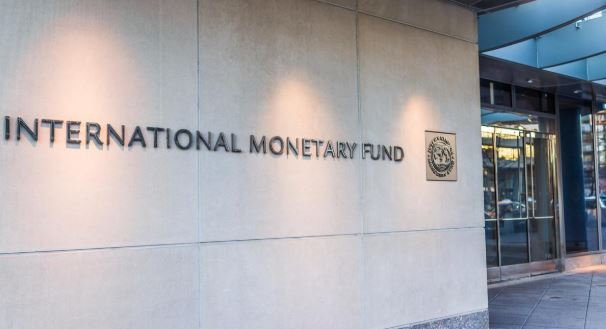
Context
On July 29, 2025, the IMF’s World Economic Outlook (WEO) – July update raised its growth forecast for India to 6.4% for both FY26 and FY27, reflecting an improvement from its April projections of 6.2% and 6.3% respectively (Reuters). Meanwhile, global growth was upgraded to 3.0% in 2025 and 3.1% in 2026, though still below the pre‑COVID average of 3.7% (IMF).
Background
This revision comes amid signs of global economic resilience, especially front-loading of imports ahead of U.S. tariff hikes, a slightly weaker U.S. dollar, and improved financial conditions. Emerging markets’ growth outlook was similarly enhanced, with expectations reaching 4.1% for 2025 and 4.0% for 2026.
Reasons for Upgrade
- More benign external environment: Lower effective U.S. tariff rates (17.3% vs previous assumptions of 24.4%) reduced trade headwinds.
- Front-loading activity: Businesses advanced purchases ahead of anticipated tariff spikes.
- Favourable financial conditions: Weaker U.S. dollar improved global liquidity.
- India-specific drivers: Reform momentum, robust consumption, public investment, and consumption-led growth supported the upgrade.
Significance
- India retains its status as the fastest‑growing major economy, underscoring macroeconomic stability despite global uncertainties.
- Indicates India’s resilience to external shocks and the benefits of domestic policy momentum.
- It reflects global optimism without complacency: growth is higher but still subdued compared to historical averages.
Definition of Technical Terms
- Front‑loading: Accelerated purchasing behavior in anticipation of future constraints, such as tariffs.
- Effective tariff rate: Actual average level of tariffs applied, as opposed to announced maximum rates.
- Emerging market/developing economies (EMDEs): Nations in transitional economic stages, characterized by rapid growth potential.
Challenges Ahead
- Downside trade risks: Tariff policy reversals or escalation could erode gains.
- Fiscal constraints: High public debt and deficits limit policy maneuverability.
- Global vulnerabilities: Geopolitical tensions and monetary tightening remain threats.
Economic Nuances
- India’s domestic demand growth and infrastructure spending provide buffers.
- Inflation is moderating globally, yet U.S. inflation may remain elevated due to tariffs.
- Currency fluctuations (weak dollar) may help some countries but also penalize others.
Lessons for India
- Prioritize labour market reforms, upskilling, and job creation to absorb agriculture-excess labour.
- Continue infrastructure investment and maintain fiscal prudence.
- Diversify trade partnerships to hedge tariff-related risks.
- Strengthen social safety nets and workforce flexibility as recommended by the IMF.
Economist’s Opinion
IMF Chief Economist Pierre‑Olivier Gourinchas highlighted that the growth upgrade reflects temporary front-loading rather than underlying strength. He emphasized that the balance of risks remains tilted downwards and reinstated the importance of central bank independence to anchor inflation expectations. Similarly, SEB’s senior economist Robert Bergqvist noted the symbolic value of upgrading forecasts is greater than the actual increment—signalling cautious optimism in uncertain times.
Way Forward
- India should sustain structural reforms in labour, land, and education.
- Fiscal discipline must stay front and centre to keep macro stability intact.
- Focus on trade diversification and export competitiveness.
- Deepen financial inclusion, invest in climate-resilient infrastructure, and institutional reforms to ensure sustained, inclusive growth.
Prelims MCQ
Q. Consider the following statements about the IMF’s July 2025 forecasts for India and the global economy:
- The IMF raised its global growth forecast for 2025 to 3.0%, citing U.S. tariff de-escalation.
- India’s FY26 GDP growth forecast was revised upward from 6.2% to 6.4%.
- The IMF attributes India’s forecast revision to a significant depreciation of the Indian Rupee.
Which of the above are correct?
(a) 1 and 2 only
(b) 2 and 3 only
(c) 1 and 3 only
(d) 1, 2 and 3
Explanation:
- Statement 1 is correct. The IMF upgraded global GDP growth to 3.0% for 2025, noting the positive impact of reduced U.S. tariff threats and improved trade sentiment.
- Statement 2 is correct. India’s projected growth was raised from 6.2% to 6.4% for FY26, reflecting a more benign external environment and domestic reform momentum.
- Statement 3 is incorrect. The revision was not attributed to a depreciation of the Indian Rupee but rather to external factors like lowering of U.S. tariffs, front-loading, and weaker U.S. dollar globally, not currency shifts specific to India.
Thus, only statements 1 and 2 are correct.
Mains Question
Q. Evaluate the implications of the IMF’s July 2025 growth forecast upgrade for India (6.4% for FY26 and FY27). What measures should India undertake to sustain this momentum amid external uncertainties?
NASA-ISRO Joint Satellite NISAR: A Game-Changer in Earth Observation
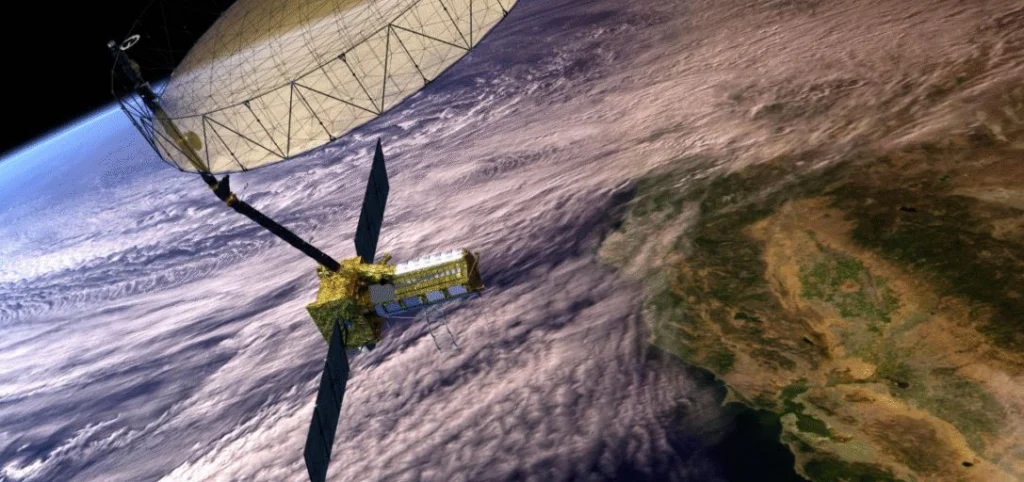
Context
On July 30, 2025, the Indian Space Research Organisation (ISRO) launched the NASA-ISRO Synthetic Aperture Radar (NISAR) satellite aboard the GSLV-F16 rocket from Sriharikota. This marks a significant milestone in Indo-US space collaboration, both in terms of technology and geopolitics, as it is the first instance where India’s GSLV has placed a satellite into a Sun Synchronous Polar Orbit (SSPO) — traditionally the domain of PSLV launches.
Background
The NISAR mission is the result of a decade-long collaboration between NASA and ISRO. The satellite combines NASA’s L-band radar and ISRO’s S-band radar, making it capable of observing subtle changes on Earth such as glacial movement, tectonic shifts, and volcanic activity. Weighing 2,392 kg, the satellite is placed at 747 km altitude, with a 5-year mission life.
Reasons for the Launch
- Climate Change Monitoring: Detects changes in glaciers, sea ice, and forest cover.
- Disaster Risk Management: Enables early warning and post-disaster assessments (earthquakes, landslides).
- Soil & Water Mapping: Vital for agriculture and drought mitigation.
- Scientific Data Sharing: Promotes global research collaboration on Earth systems.
Significance
- First-of-its-kind radar imaging: Ability to observe day and night in all weather conditions.
- Technological Milestone: First heavy payload to Sun Synchronous Polar Orbit by GSLV.
- Geopolitical Message: Demonstrates the strategic convergence between India and the US in space.
- Environmental Intelligence: High-resolution data useful for the global scientific community.
- Capacity Building: Enhances India’s launch capability for future Earth observation missions.
Definition of Technical Terms
- Synthetic Aperture Radar (SAR): A radar system that uses microwave pulses to generate high-resolution images of the Earth’s surface.
- L-band and S-band Radar: L-band penetrates vegetation and soil; S-band captures surface-level changes.
- Sun Synchronous Orbit (SSPO): A near-polar orbit where the satellite passes over the same part of the Earth at roughly the same local solar time daily.
Challenges
- GSLV Reliability: Previous failures in 2021 and early 2025 raise concerns.
- Data Interpretation: High-volume data needs advanced analytics and trained human resources.
- Calibration Phase: A 90-day delay before the science phase begins could limit early disaster alerts.
- Dependence on foreign technology: Radar payload collaboration may restrict India’s standalone capabilities.
Economic Nuances
- Global Commercial Value: High-quality Earth observation data boosts India’s commercial satellite services.
- Agriculture and Urban Planning: Supports crop insurance, water management, and smart cities.
- Cost Sharing with NASA: Reduces individual financial burden on ISRO.
Lessons for India
- Diversify Launch Capability: GSLV’s role in SSPO expands launch portfolio.
- Enhance Satellite Analytics: Invest in AI-based data interpretation systems.
- Foster Strategic Tech Partnerships: Leverage tie-ups for high-end payload development.
“This is a very advanced satellite that can capture even the slightest movements on the Earth’s surface. These observations can help in mapping changes such as volcanic hazard or landslides and prepare in advance.” — Dr. K Sivan, Former ISRO Chairperson
Way Forward
- Improve GSLV Reliability: Technical audits and global benchmarking.
- Operationalize Data Ecosystem: Real-time access for ministries, disaster authorities, and universities.
- Strengthen Indigenous Radar Development: Reduce external dependency in future missions.
- Leverage Data for Policy: Integrate with PM Gati Shakti, Smart Cities Mission, and National Disaster Management Plan (NDMP).
Prelims MCQ
Q. Consider the following statements regarding the NISAR satellite:
- NISAR will be the first satellite to be launched by India’s GSLV into a Sun Synchronous Polar Orbit (SSPO).
- The satellite uses only NASA’s L-band radar for observing Earth’s surface.
- NISAR can observe Earth in all weather conditions, during day and night.
Which of the above statements is/are correct?
A. 1 and 2 only
B. 1 and 3 only
C. 2 and 3 only
D. 1, 2, and 3
Answer: B. 1 and 3 only
Explanation:
- Statement 1 is correct: This is the first time the GSLV (Geosynchronous Satellite Launch Vehicle) is launching a satellite into a Sun Synchronous Polar Orbit (SSPO), traditionally used for Earth observation. Typically, ISRO uses PSLV for such missions, but NISAR’s weight exceeded PSLV’s payload capacity.
- Statement 2 is incorrect: NISAR uses dual-frequency radar systems — NASA’s L-band radar and ISRO’s S-band radar. The L-band can penetrate deeper into vegetation and soil layers, while the S-band is more surface-sensitive. This dual-band configuration improves the satellite’s ability to detect a range of geophysical processes.
- Statement 3 is correct: One of the primary advantages of Synthetic Aperture Radar (SAR) is that it operates in the microwave spectrum, which allows it to image Earth day and night, in all weather conditions, including cloud cover, rain, or dust storms — unlike optical satellites.
Thus, only statements 1 and 3 are correct.
Mains Question
Q. Discuss the strategic and scientific significance of the NASA-ISRO NISAR satellite collaboration? (Answer in 150 words)




